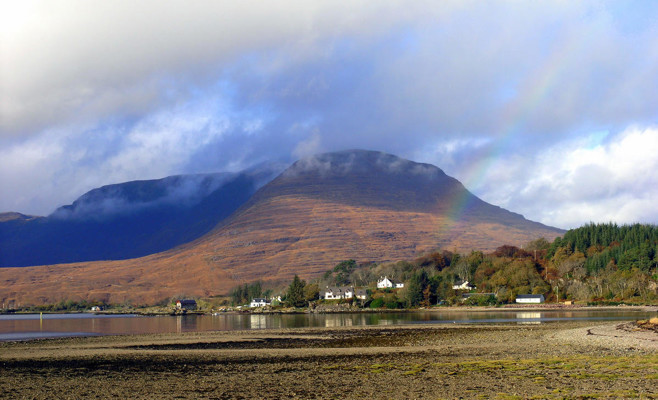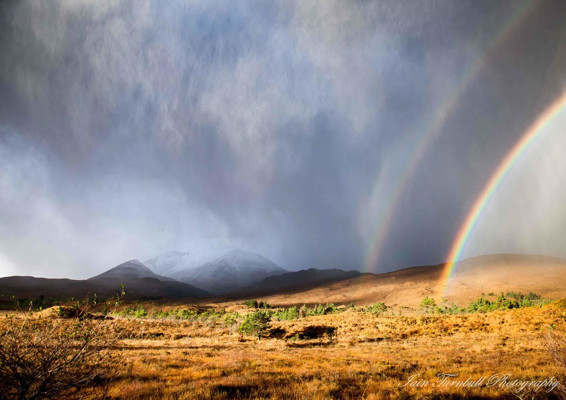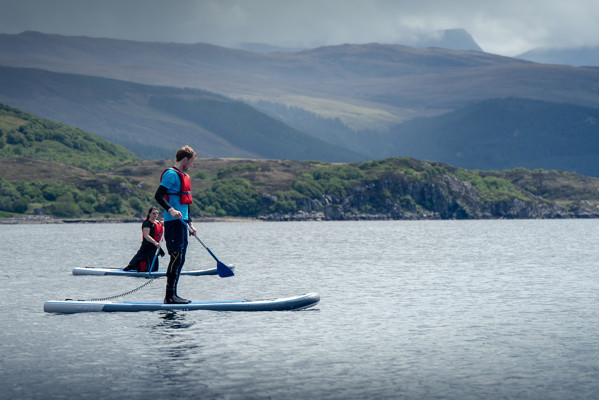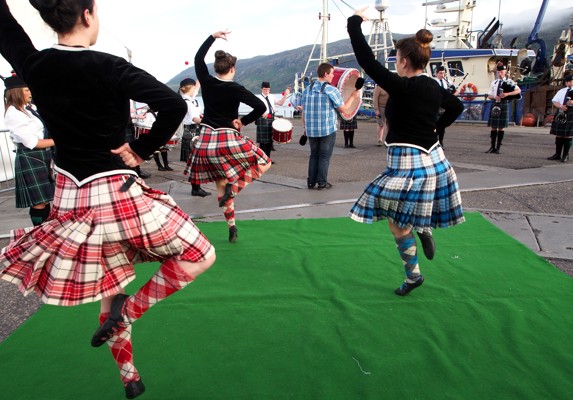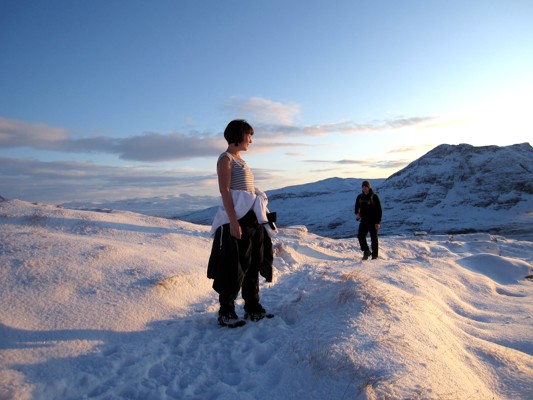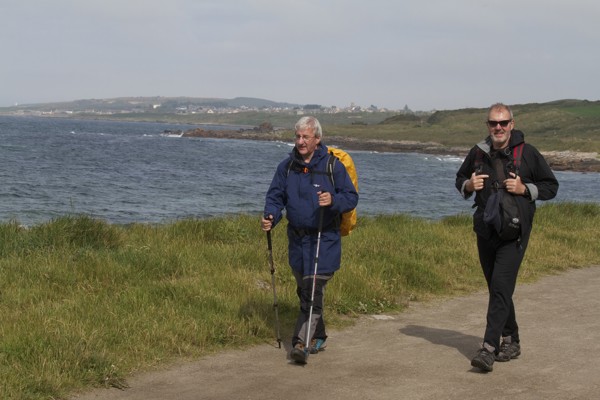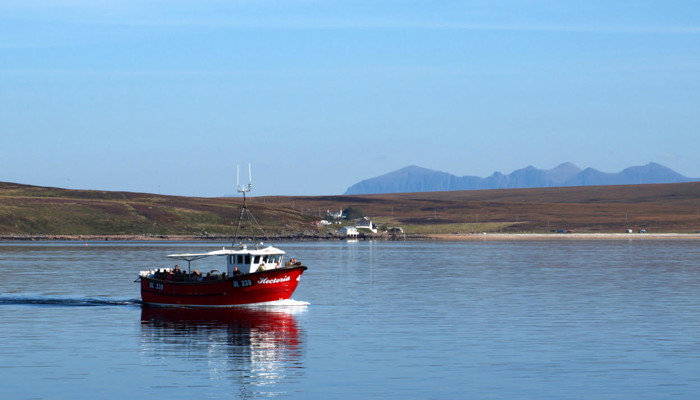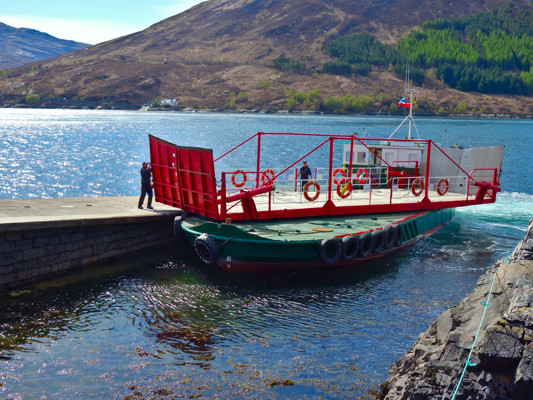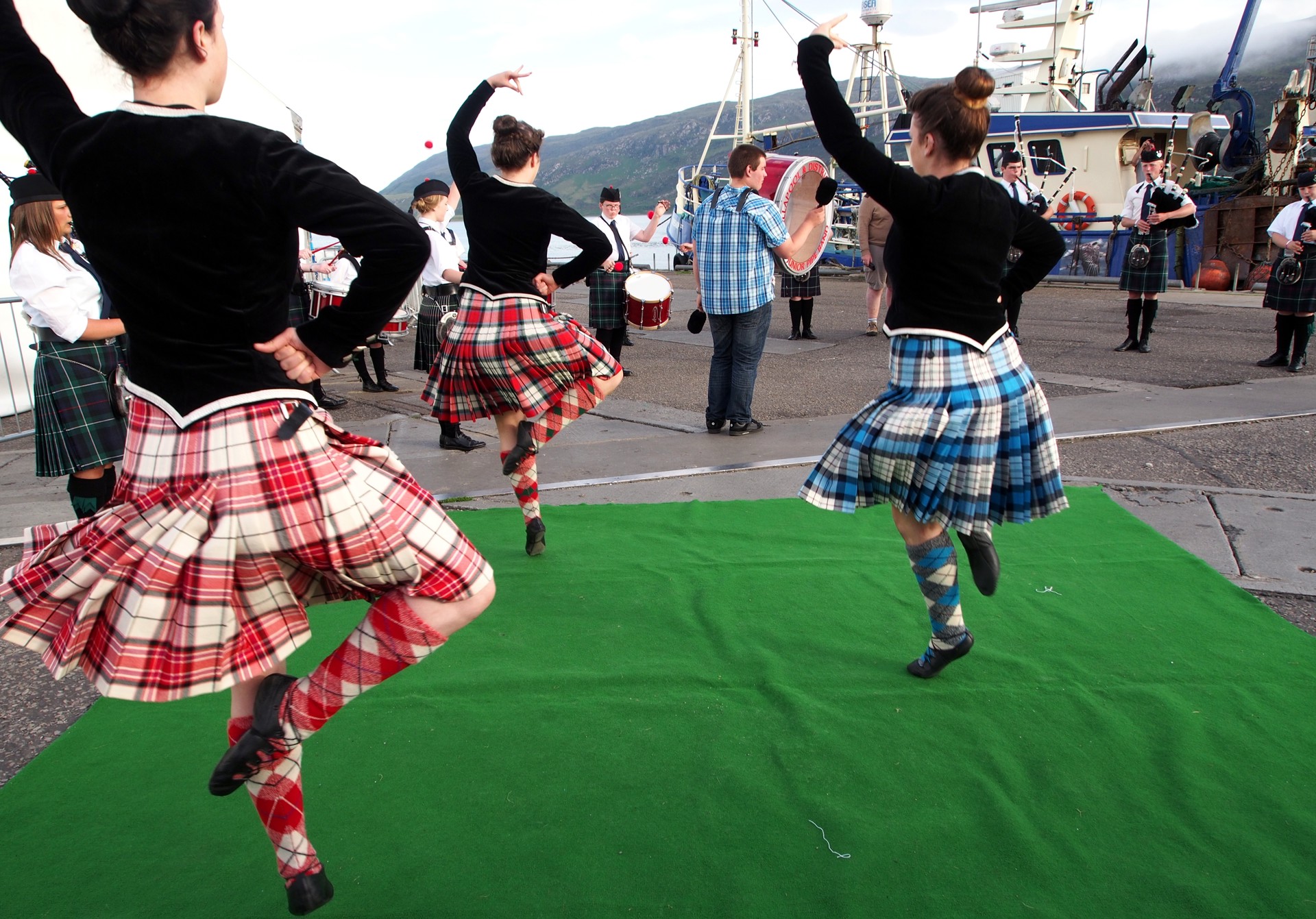
Wester Ross Biosphere
by Robin McKelvie“Our motto, our entire ethos, can be summed up in just one line”, smiles Natasha Hutchison, General Manager of the Wester Ross Biosphere. “Happy places to visit must first be happy places to live.”
Wester Ross is certainly a happy place for me, a corner of mainland Scotland that is bettered I reckon by nowhere else. This is an epic land writ large; Scotland on glorious Technicolour steroids. Wester Ross’ mountains vault to Munro height. And beyond, towering over cobalt lochs dappled with Scots Pine-clad islands. The Atlantic-ravaged beaches trump the Caribbean; the food and the sunsets are much better. I’ve hiked, biked, drank and ate gloriously on every visit to Wester Ross and if you haven’t yet I suggest you go. Soon.
Hutchinson has found her happy place in Wester Ross too. She moved here from upstate New York and was instantly struck by the people: “The sheer friendliness of everyone locally and the warmth of the welcome surprised me. I was instantly offered lifts and people always have time to talk with you here.”
As well as her sterling work with Wester Ross Biosphere (WRB), Hutchison also knows what she is talking about in the real business and community world first hand, running the Ashcroft B&B with her husband. They live and work in a vast area with a population of 8,000 people. It is no postcard, but a real living landscape a million miles from the empty wilderness you often find romanticised on glossy TV programmes. This idea of communities finding ways to sustainably live in a fragile environment is a central tenet of the UNESCO Biosphere programme.
WRB has been managing sustainability projects across the whole of Wester Ross and Lochalsh since the UNESCO Biosphere was set up back in 2016, using guidance from its over 250 members to determine strategic priorities. “We really listen to the community, then the board distils down their ideas into workable projects that we can actually implement, so it’s no mere talking shop”, stresses Hutchinson. WRB now has over 50 Official Supporters, comprised of businesses and groups who sign up to demonstrating a commitment to sustainable development.
“We want businesses to be able to capitalise on the UNESCO brand to develop initiatives that can provide good quality jobs”, explains Hutchison. “We help them to align with the SDGs, showing that it is possible to earn an income while reinvesting in their communities by providing valuable products and services, employment, training opportunities and safeguard heritage. WRB sat on the steering group for Scotland’s UNESCO Trail, which is the first of its kind in the world. The digital trail promotes responsible and sustainable travel choices and itineraries to help preserve environmental and cultural integrity, while supporting the communities which care for it.”
I’m impressed by the organisation and structure behind the work they do. In 2020 WRB created and launched what Hutchison’s describes as “Scotland’s first community-led destination management plan”, which aim to address the needs of visitors, residents, businesses and the environment to ensure future sustainability, getting everyone working together and tying right into SCOTO’s core aims. Hutchison sees real strength in this inclusive approach: “It addresses fragmentation; a visitor economy is not controlled by any one stakeholder group, so it is essential that public, private and voluntary sectors work together for the best possible management and prioritisation of resources.”
I have to address the elephant in the room with Wester Ross - the unbridled popularity of the North Coast 500 driving route. As a travel writer, I remember editors asking me for stories on it the year it launched, only for the same editors to come back to me the next year to ask for stories on alternatives or ways of getting off the popular route. Hutchison is very sensitive to the community when it comes to tourism pressures: “The NC500 presents both opportunities and challenges. We encourage its users to recognise and respect that there are real communities here. Wester Ross is not a drive-through zoo, so education and respect are pivotal.”
Hutchison continues, “To address concerns around sustainable tourism, we have several ongoing projects related to visitor education and business support. We believe that overall, visitors want to do the ‘right’ thing, we just need to make it easy for them to do so. Our Touring Wester Ross leaflet is refreshed every year. It is geared toward those travelling by car and campervan, contains a map of facilities as well as tips for preserving our outstanding environment. ‘Sustainability’ has almost become an overused term, and we believe that it is not an end goal, but a way of living.”
Again the WRB take things beyond just being a talking shop. “We understand the need to communicate the SDGs in a way that is practical and meaningful to our communities and visitors. Working alongside a growing number sustainably conscious businesses and organisations, our ‘Sustainable Development Goal Posts’ are strategically placed across the WRB area”, Hutchison explains. “They highlight a specific SDG and the linked business or group who is actively supporting it. Each post is equipped with a QR code taking the user to information located on our website about both the business and the work they are doing to the related SDG. From Quality Education (SDG 4) demonstrated by The Torridon’s Apprenticeship in Hospitality programme, Life on Land (SDG 15) at Inverewe Garden to Sustainable Communities (SDG 12) at Fisk Gallery, the scheme demonstrates commitment to sustainability in an accessible way.”
The approach of WRB must be on to something as they have had interest from – and are working together with - other groups from the Nordic nations and as far away as Quebec. I’m talking to Hutchison today from her temporary working base in Estonia. “Other groups are interested as we are one of the only entirely community-led UNESCO Biospheres in the world with a network of over 700 sites”, she stresses. “We are also honoured to have received the Stromar Award for Natural Capital and Sustainable communities at the 2022 SCDI HIGHLAND Awards.”
I’m not surprised to learn that the Wester Ross Biosphere is not even done there. They have now grown to two full-time employees and three volunteers, and are looking into developing more links with local schools, engaging young people in a landscape where traditionally many leave. Other plans include maps that cover existing and new cycle and walking routes, not just between tourist sights, but connecting actual communities. “We want to encourage visitors not to be so transient, to stay and become ‘temporary locals’. We’ve just hired a Gaelic development officer to help everyone access Gaelic heritage and culture within the landscape and the community.” There are also big plans for a ‘Biosphere Campus’ and research station, with feasibility work already underway. This is a community organisation already on the UNESCO world map who are thinking big.
